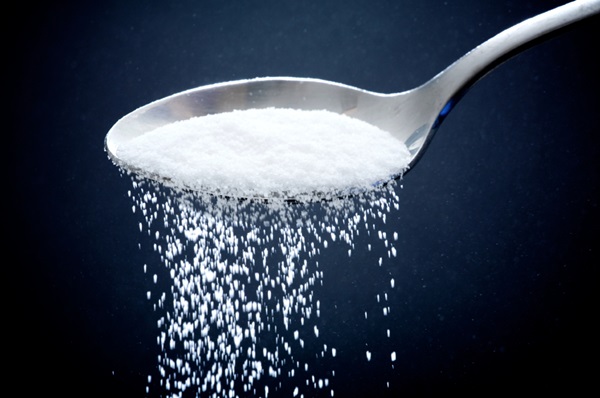The war on junk food is in full throttle. It began its slow escalation from proposals to improve school lunches and banning soda machines in schools, then maybe took a left turn into a little absurdity with the Mayor Bloomberg-led moratorium on giant-sized sodas in New York City (which takes effect tomorrow).
Junk food has been front and center in recent weeks as a high profile New York Times report outright accused food makers of a concerted effort to hook the public on cheap unhealthy snacks. Now, sugar is back in the crosshairs, and candy makers are beginning to sweat.
It’s nothing short of surreal: the candy industry wants to offer solutions to the obesity crisis.
“If we don’t [act], I worry that someone else will do it for us.” said Debra Sandler, president of Mars Chocolate in North America at the National Confectioners Association meeting in Miami. “We need the whole industry to step up… We are not judged by the leaders of the category but by those who do not take responsibility for change.”
One place Mars and its competitors are starting – their youngest consumers. “They have adopted a policy to voluntarily stop direct marketing of candy to children under 12 years old. That’s a start,” noted Mary Hartley, RD, our resident nutrition expert.
There are many reasons we are in an obesity epidemic, but the argument that sugar is the ringleader is difficult to deny, especially given its addictive nature. According to the U.S. Census Bureau, Americans consume about 25 pounds of candy a year. One candy executive argues that candy is a small percentage of our caloric intake. The National Confectioners Association wants to “help consumers understand that candy, in small portions, is very much a part of a healthy happy lifestyle.”
“They are spreading the message that people can eat small amounts of candy ‘every day or larger pieces 2 or 3 times a week.’ Don’t believe it,” warns Hartley. “Candy is appropriate for everyday only after the necessary foods have been eaten. If there are calories left to spend on fun, then candy is an option, but most people don’t have extra calories for that. It’s too easy to waste calories on non-nutritious, but tasty, foods. Don’t go there.”
Candy isn’t the only source; sugar comes in many sources you don’t think of as sugary foods. The hidden culprit is packaged foods, which can really add up when you think about how much of it most of us eat. Breakfast cereal (even the healthier ones), salad dressings, and bread can all have surprisingly high sugar levels. There’s even high fructose corn syrup in our medicine – take a second look at your cough syrup.
Even more damning is that a new study found that the higher a nation’s sugar consumption is, the higher the type 2 diabetes rate. Researchers from Stanford and the University of California were sure to account for many other factors, including wealth, age, obesity, sedentary behavior and alcohol use. The diabetes rate and sugar consumption correlation was independent of those factors. Plus, sugar can cause diabetes even if you don’t happen to be obese.
“Sugar, from all sources, not just candy, does contribute to obesity. Place? Look at the Full Obesity System map,” said Hartley. This is an incredible resource to understand our food system, how and why we eat, and how and why we’re obese. Not to mention, it’s sugar-free eye candy for the infographic lover.
While there is an inherent peculiarity in expecting the people who sell sugary products to take part in the solution, making modest changes to how they approach their business can make a difference. One expert even believes they can take action that will not only not hurt their bottom line, but could be profitable.
“If they do some smart things that make it easier for consumers to eat healthier, they may also expand their markets and increase profits. Regardless of their intentions, that’s a win-win for everybody,” said Brian Wansink, a professor of consumer behavior at Cornell University’s Dyson School.
I’m not sure that candy makers “expanding their markets” is a “win-win,” but anyway…
Not All Calories Are Created Equal
“Beating obesity will take action by all of us, based on one simple, common-sense fact: All calories count, no matter where they come from,” said Coca Cola in their recent campaign responding to critics and those urging action.
Notice the statement doesn’t say “all calories are the same,” but “all calories count.” Just a hunch, but that screams legal department manipulation to say something by slightly tip-toeing around it, because Coca Cola knows they couldn’t come out and say “all calories are the same.” It’s one of the more unfortunate myths to be perpetuated over the years. It’s tantamount to saying the only value derived from food is the energy it provides. If all calories were the same we could live healthy and happily on a steady diet of one food as long as we hit our daily caloric requirement.
Should candy makers consider resealable bags to deter consumption all in one sitting? Should their products not be placed at checkout counters where people make impulse decisions? Maybe we should think less about attacking the problem foods and more about promoting the good stuff.
The solution to our sugar dependence is not easy and will take more than one action or initiative. If people on both sides of the argument can speak sensibly about solutions and not speak in absolutes, maybe progress can be made.
Also Read:
10 Breakfast Foods with As Much Sugar as a Candy Bar

